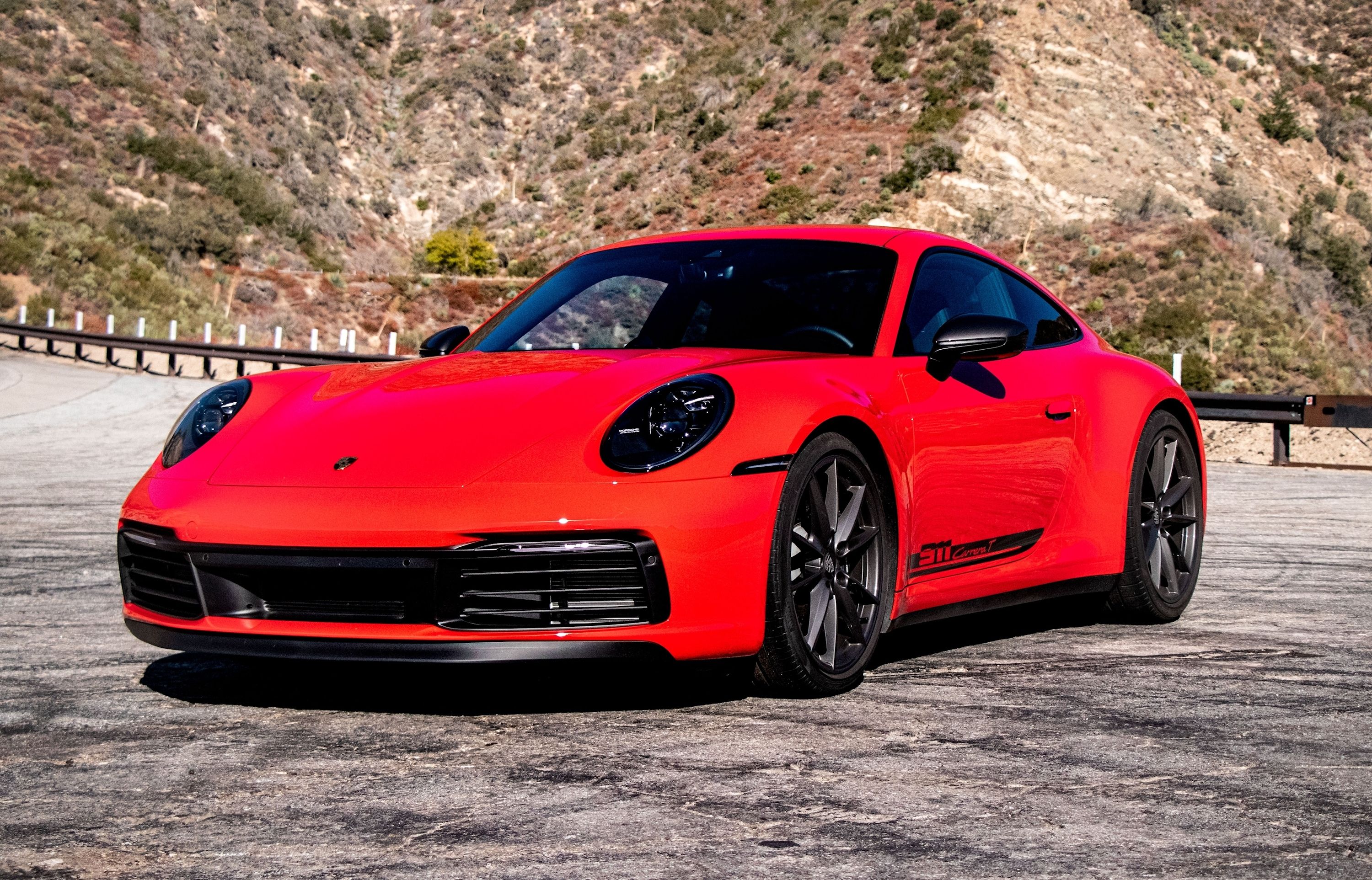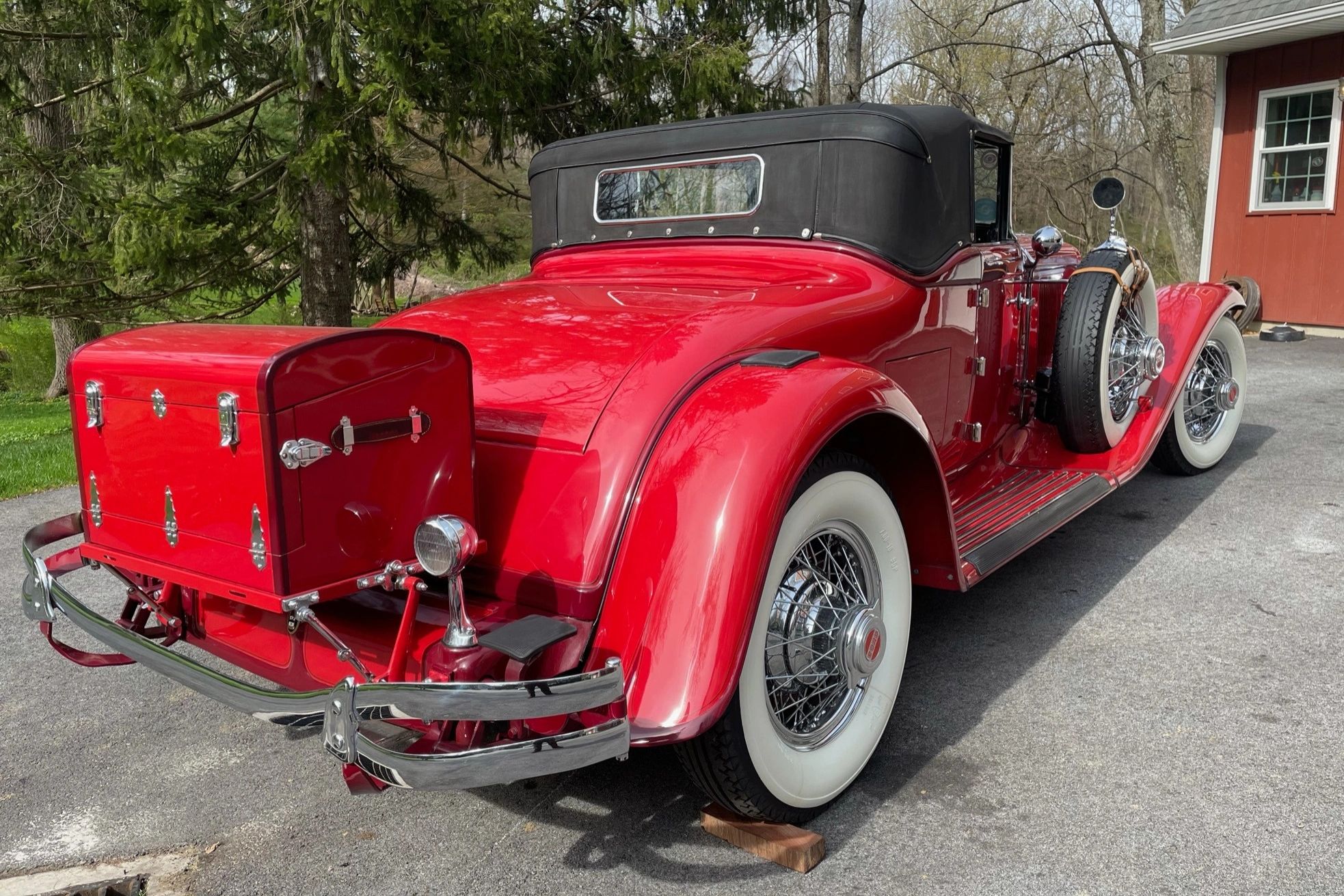
Throughout the history of the motorcar, advancements in technology and design have led automakers to improve just about every aspect of a vehicle. But there's one aspect that, for the most part, has remained roughly the same over the years, save for some minor revisions and adaptions here and there.
We're talking about the car trunk, of course. It's not the most exciting part of a vehicle, but the history of the trunk area is surprisingly interesting and has evolved to a point where we have frunks, hatchbacks, tailgates, and more. But how did it all start? For that, we have to go back to the early days of the automotive industry.
But before we get into that, we have to answer: what is the trunk of a car?
What Is A Trunk?
Simply put, a trunk is the largest storage place found on a vehicle. Its primary function is to swallow copious amounts of cargo, providing individuals with a secure place to store their biggest belongings.
It is often lockable and concealed, making it difficult to access without the key or key fob. In vehicles such as hatchbacks, SUVs, and wagons, manufacturers often include a cover to prevent prying eyes from looking into the vehicle. Typically, the trunk is separate from the rest of the cabin, although some body styles see the trunk included as part of the larger interior.
More practical vehicles feature a folding seatback that enables you to extend the trunk space into the passenger area. The trunk is also used to store any number of accessories, but that will be covered separately in this article.
The Early Days: When A Trunk Was An Actual Trunk
Long before the car had been invented, people traveled in horse-drawn carriages. With no designated luggage area, bags and other items would be stored in side-, top-, or rear-mounted boots or trunks. In the late 19th and early 20th century, cars slowly became more popular, but their design didn't include a traditional trunk as we know it today.
As such, motorists would attach trunks to the rear of their vehicles, and thus, the term was coined. The early iteration applied to luggage that was custom-built for a specific vehicle. According to various reports, French trunkmaker Moynat was a leader in this segment and became renowned for its high-end car trunks.
So when did the integrated trunk become more commonplace?
The 1920s: The Trunk Slowly Becomes Mainstream
American automakers like Buick and Duesenberg were among the first automakers to incorporate a trunk onto the back of a car. However, this was still a rudimentary design that was separate from the vehicle's bodywork. It's difficult to narrow down, but the first integrated trunks started making an appearance in the 1930s. A good example of this is the 1934 Buick Club Sedan, as well as the 1936 Mercedes-Benz 500K Cabriolet.
Like many modern vehicles, the early trunk was predominantly at the rear and featured a lockable lid or liftgate that had enough space for luggage. The car liftgate would remain like this for many years to come, with advancements only following in the next decade or so.
1930s: The Hatchback Makes An Appearance
You can trust the French to think out of the box and in 1938, Citroen did just that with the 11CV Commerciale. Aimed at tradesmen, the front-wheel-drive car was fitted with a two-piece tailgate (as you'd find on a modern-day Range Rover), with one section hinged from the roof and another hinged at the base of the trunk floor.
After World War II, Citroen redesigned it as a larger, roof-hinged lid, and thus the hatchback was born. This design has been used ever since and remains popular thanks to the practicality it affords. But it was only in the 1960s that the hatchback would become mainstream, with fellow French brand Renault utilizing the idea for the iconic 4 and the 16 L.
The 1950s: Innovation And Convenience Come To The Party
In 1950, Ford introduced a simple but effective feature that would continue to be used by vehicles for many more years. By fitting a trigger catch on the trunk lid, owners could open the trunk with one hand until it was fully open. Just two years later, Buick would introduce a counterbalancing feature that would lift the trunk lid automatically.
Not Every Car Has A Trunk At The Rear
Of course, not every car has a trunk situated at the rear. Rear-engined vehicles like the VW Beetle and Chevrolet Corvair were fitted with unconventional (for the time) front trunks, a design trend that is also favored by many sports cars and supercars.
The Porsche 911 is a fine example and has long provided customers with storage space beneath the hood. In the modern era, well-packaged electric vehicles provide owners with both a traditional trunk and space at the front. This has become known as the 'frunk' in recent years and has even become a marketing tool for many automakers.
The Trunk Lid Continues To Evolve
With the introduction of the W124 E-Class, Mercedes-Benz changed the way we would view trunks forever. Before the midsized Benz arrived in 1986, trunk lids were just that - a lid. This meant lifting heavy luggage over a high sill and squeezing large objects into a narrow loading space.
The W124's trunk extended all the way down to the lower bumper and popularized a design that remains common to this day. Not only did this make it easier to load heavy objects, but the opening was considerably bigger than ever before. Next time you're out on the road, take a look at how many sedans have adopted this brilliant piece of design.
Other innovations from the German giant include a concealed trunk handle that would stow away when the lid was closed. The idea behind this was that one wouldn't have to get their hands dirty when opening the trunk.
Technology Creeps Into The Trunk Area
Once the reserve of luxury vehicles, the powered tailgate/trunk lid has become fairly common, even in the mainstream segments. This is so that you can access the cargo area even if your hands are full, and you don't necessarily have to bother closing it yourself either.
A development of this feature is the hands-free version. A sensor detects your waving foot and automatically opens, allowing you to load the heavy groceries or luggage you were carrying with ease. Many argue that this is a pointless feature, but such people have probably never loaded supplies with a toddler on their arms.
Interestingly, the idea of a powered tailgate stretches back to the 1950s. Packard debuted the Dick Teague-designed Predictor at the 1956 Chicago Auto Show, and one of its many impressive features included a power-operated trunk lid.
Not All Trunks Are Created Equal
Not that long ago, the trunk was purely utilitarian, with only a few vehicles receiving carpeting and upmarket trimmings. Today, you'd be hard-pressed to find a car that doesn't have a carpeted trunk area, but some automakers have taken it even further.
The Rolls-Royce Cullinan and new Range Rover offer jump seats so that well-to-do owners can watch a polo match or horse racing from the comfort of their vehicles. Another feature you'll find in some posh trunks includes umbrella holders, chrome finishes, and even a fridge. While this has since been moved into the rear armrest of many cars, it once occupied the boot of a car.
We have to mention the Volkswagen Phaeton here, which had some of the most beautiful trunk hinges we've ever seen. Fashioned out of metal, the machined components are a thing of beauty and a reminder of Piech's incredible attention to detail.
What Is Trunk Space And How Do We Measure It?
The meaning of boot space (or trunk space) is rather simple. It's simply the measure of a trunk's load-carrying capabilities. In the United States, we use cubic feet (ft3) to determine cargo space, but in other markets, liters or cm3 are also used. The bigger the number, the more capacious the trunk.
However, it's important to remember that while a volumetric measurement gives us an idea of how big a loading bay is, it doesn't always equal a practical packing area. Vehicles with flat-load floors are the most user-friendly. This includes SUVs and hatchbacks with flat-folding seats; some models have seats that fold upwards and to the window, which makes loading larger items or awkwardly-shaped objects more difficult.
As spare tires become a rarity in new vehicles, many automakers have taken to adding hidden storage space beneath the storage floor, which is handy if you've got valuables you want to hide temporarily or that may slide about in a larger space.
Some Trunks Are Doors, Others Are Not
An SUV with a tailgate of some sort is common, but is a trunk considered a door? In some cases, yes, it is. With sedans and most coupes and convertibles, the trunk is separate from the passenger area and is therefore considered to be a separate part of the vehicle. However, in hatchbacks, wagons, and SUVs, the trunk is part of the cabin and can be accessed via the interior of the car.
Occupants can enter the cabin through the car liftgate, which technically makes it a door. That's why you'll often see hatchbacks or SUVs being referred to as having a three-door or a five-door configuration. In certain wagons with a rear-facing third row of seats, the trunk door genuinely does serve as occupant entry.
Earlier wagons and SUVs (like the first-generation Honda CR-V) featured a side-hinged tailgate that operated like a traditional door.
Is A Truck Bed Considered A Trunk?
While it's a similar concept, the truck bed - or cargo bed - is not considered a trunk. With a bare metal finish (rubber or plastic protection can be added), the storage area in a truck is primarily designed to lug large pieces of equipment and tools. That's convenient and has its uses, but the large area means it's often impractical to use a truck bed in the same way one would utilize a trunk or cargo area.
Unless a tonneau cover is fitted, your possessions are also exposed to the elements and those with sticky fingers. Rivian has worked around this problem with the rather nifty gear tunnel found in the R1T, but this still can't match a traditional trunk for storage space.
Is there a truck with a trunk? Well, the F-150 Lightning has a front trunk, or frunk. But other than that, the quirky Lincoln Blackwood - Ford's failed attempt at a luxury truck - comes pretty close.
What Else Can You Find In The Trunk?
Open the trunk door or lid, and you'll discover there are many parts of a car trunk. Traditionally, this would include the spare wheel (newer cars usually have a puncture repair kit), an emergency roadside warning triangle, a first-aid kit, and even gloves for changing a flat tire.
Many of these items are stored beneath the trunk floor, where you'll also find a wheel jack, wheel spanner, and, if you're lucky, an entire tool kit. In some vehicles, like older BMWs, a full tool kit can be found on the inner part of the trunk lid.
Some of the aforementioned accessories can also be stored in a designated storage area on the side of the trunk floor. Many car companies also elect to fit the vehicle battery in the trunk, useful in a car with a compact engine bay or one where balanced weight distribution is a priority. You may also find a CD changer in the trunk of older vehicles, along with smaller items like grocery hooks and sound system equipment.

